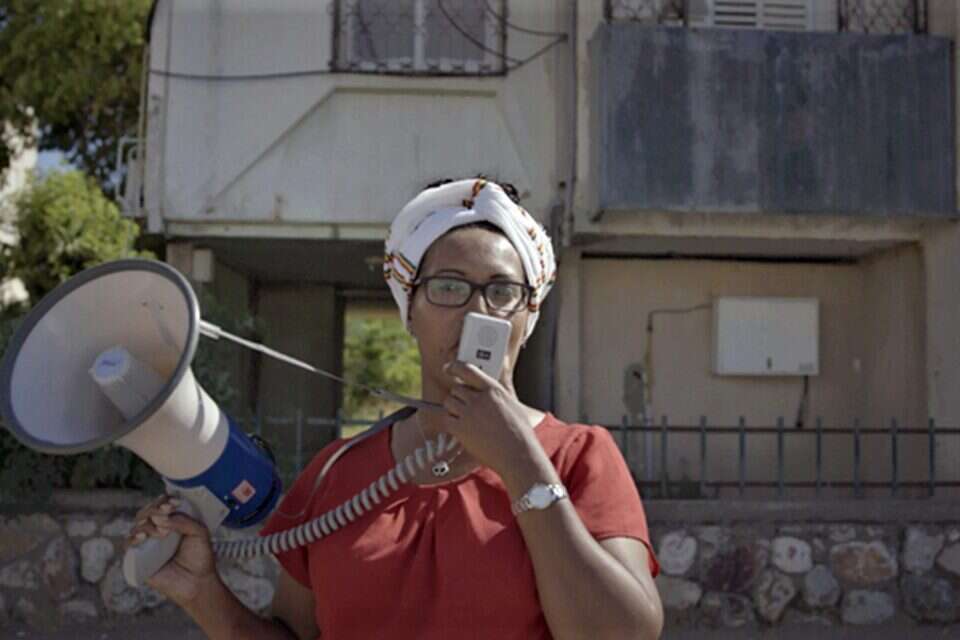As Israelis we like to decorate our homeland with concrete dresses and impressive construction projects.
Already in 1969, Kishon set a satirical mirror in his film "Blaumlich Canal" for our worship of accelerated construction even when it is aimless.
The hero of the film, Kazimir Blaumilch, escaped from the insane asylum, stole an air hammer from the Tel Aviv municipality, and began drilling on Allenby Street.
All the people of the establishment joined the pointless project and took the honor for the warning project when Kishon doubts who is sane here.
If the Blumlich canal was based on an imaginary reality, the new film by Elmwerk and Kobi Davidian ("The Fig Tree") "Honey Trap" is based on the painful reality of the 2000s, in which canals are dug in every city and if in Israel as part of "clearance-construction" - urban renewal.
The old houses are being removed and magnificent towers are being built in their place.
For eight years, the Dovidans followed a less flashy urban renewal project taking place in the social periphery of Israel, the Kiryat Moshe neighborhood in Rehovot, a housing neighborhood established on the edge of the city to accommodate new immigrants.
Over the years, the immigrants changed in it according to the waves of immigration, and those who could left.
Kiryat Moshe remained rooted in poverty and crime, unlike the city of Rehovot which grew and flourished at the same time.
The film, whose premiere was held at the Haifa Film Festival, follows the process that the neighborhood goes through in an attempt to undergo eviction and construction after having already undergone two operations of the rehabilitation of failed neighborhoods.
Today, most of the residents of the neighborhood are immigrants from Ethiopia, so the story of the neighborhood is told from the point of view of the ex-communists, and many scenes are in Amharic.
The heroes of the film are the members of the younger generation of the neighborhood: Hana Temanu, coordinator of culture and cabaret Getnet, law student and representative of the residents.
The two want to improve the situation and are willing to work for it voluntarily.
Their goal is to convince the residents to agree to the evacuation-construction plan, which turns out to be no easy task.
from the movie.
Photography accompanies the process patiently and with a lot of hope,
About 1,300 homeowners need to be convinced that this is the right move and agree on one entrepreneur among the train of entrepreneurs rushing to the neighborhood and promising them greatness and sieges.
"Who can we trust?" one of the residents asks.
The heroes of the film also face personal problems and are torn between the generation of parents they respect, but do not understand the reality, and the youth who are in immediate danger of degenerating into crime.
Their camera accompanies the process gently, patiently and with a lot of hope.
At a moderate pace, like Ethiopian women marching to the river.
She is like a fly on the wall at residents' meetings, in personal meetings, on signing trips in stairwells, and sensitively reveals the identity of the neighborhood through its unique characters.
A demolition-construction project in an average building in Tel Aviv requires the consent of 10-20 tenants.
In the periphery, the problem is not only the amount of signatures that need to be collected, but the lack of viability of the project for entrepreneurs due to the low housing prices in these neighborhoods.
In Kiryat Moshe, the state allocated special areas to entrepreneurs in order for the project to be financially feasible.
Many politicians cut a coupon for this allocation, but after the hard work put in by the residents and their overcoming all the bumps, the land allocation was canceled due to a dispute between the municipality and the state who would bear the cost of the development expenses.
The millions invested by taxpayer money for lawyers and architects went down the drain along with the dreams of the young and fighting generation that is not willing to give up - even though the additional land designated for the neighborhood was sold to the public to the highest bidder.
One of the most powerful scenes takes place in Shiva about the late 18-year-old Baruch Anabia, who was stabbed to death during a fight between teenagers in the neighborhood. The elder of the community is among those who mourn him. , greed and social activism. Today there are hundreds of distressed neighborhoods across the country that are in the situation of Kiryat Moshe, where the distress is only increasing. Clearing and building has become a project for the privileged, and if man is the template of his native landscape, it seems that we should do something about it.
were we wrong
We will fix it!
If you found an error in the article, we would appreciate it if you shared it with us

